I'm trying to capture the screen and then paint the image to a JFrame recursively while scaling the image (to create that effect you get when you look at a mirror in a mirror).
I'm having trouble with my code - it doesn't paint any graphics. What am I doing wrong?
import java.awt.AWTException;
import java.awt.Dimension;
import java.awt.EventQueue;
import java.awt.Graphics;
import java.awt.HeadlessException;
import java.awt.Image;
import java.awt.Rectangle;
import java.awt.Robot;
import java.awt.Toolkit;
import java.awt.event.WindowAdapter;
import java.awt.event.WindowEvent;
import java.awt.image.BufferedImage;
import javax.swing.JFrame;
public class ScreenCapture extends JFrame {
BufferedImage screenCapture;
Graphics screenCaptureGraphics;
private static int recurseCount = 0;
private static float $scale = 0.9f;
private static float scale = 1.0f;
private static int height;
private static int width;
ScreenCapture() {
try {
screenCapture = new Robot().createScreenCapture(
new Rectangle(Toolkit.getDefaultToolkit().getScreenSize()) );
height = screenCapture.getHeight();
width = screenCapture.getWidth();
setSize(new Dimension(width, height));
addWindowListener(new LocalWindowListener());
Graphics g = recursiveDraw(screenCapture, getGraphics());
paint(g);
} catch (HeadlessException e) {
// TODO Auto-generated catch block
e.printStackTrace();
} catch (AWTException e) {
// TODO Auto-generated catch block
e.printStackTrace();
}
}
private Graphics recursiveDraw(BufferedImage img, Graphics imgG) {
updateScale(++recurseCount);
float newWidth = scale*width;
float newHeight = scale*height;
int w = (int) newWidth;
int h = (int) newHeight;
System.out.println("W: " + w + "; H: " + h);
if (w >= 10 && h >= 10) {
//scale image
System.out.print("Creating scaled Image...");
Image scaled = img.getScaledInstance(w, h, Image.SCALE_SMOOTH);
BufferedImage resized = new BufferedImage(w, h, BufferedImage.TYPE_INT_RGB);
imgG = resized.createGraphics();
imgG.drawImage(scaled, 0, 0, null);
System.out.println("...Image drawn to graphics");
//return new graphics
return recursiveDraw(resized, imgG);
} else {
//otherwise return old graphics
System.out.println("Completed.");
return imgG;
}
}
private void updateScale(int count) {
for (int i=0; i<count; i++) {
scale *= $scale;
}
System.out.println("Updated scale: " + scale + "; Recurse count: " + recurseCount);
}
public static void main(String[] args) {
EventQueue.invokeLater(new Runnable() {
@Override
public void run() {
new ScreenCapture().setVisible(true);
}
});
}
private class LocalWindowListener extends WindowAdapter {
@Override
public void windowClosing(WindowEvent e) {
System.exit(0); return;
}
}
}
EDIT: This is what I tried after @andrew-thompson 's answer:
ScreenCapture() {
try {
screenCapture = new Robot().createScreenCapture(
new Rectangle(Toolkit.getDefaultToolkit().getScreenSize()) );
height = screenCapture.getHeight();
width = screenCapture.getWidth();
setSize(new Dimension(width, height));
addWindowListener(new LocalWindowListener());
setLayout(new GridLayout());
add(new PaintPanel());
} catch (HeadlessException e) {
// TODO Auto-generated catch block
e.printStackTrace();
} catch (AWTException e) {
// TODO Auto-generated catch block
e.printStackTrace();
}
}
private class PaintPanel extends JPanel {
@Override
public void paintComponent(Graphics g) {
g=recursiveDraw(screenCapture, g);
//what to do with g?
}
}
I still have the same problem where I don't know how to make the BufferedImage paint to the graphics.

